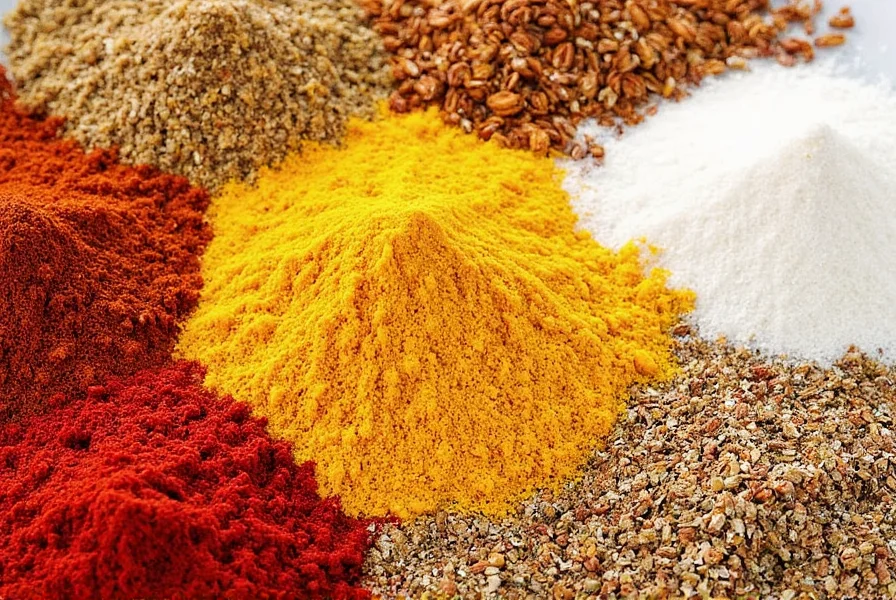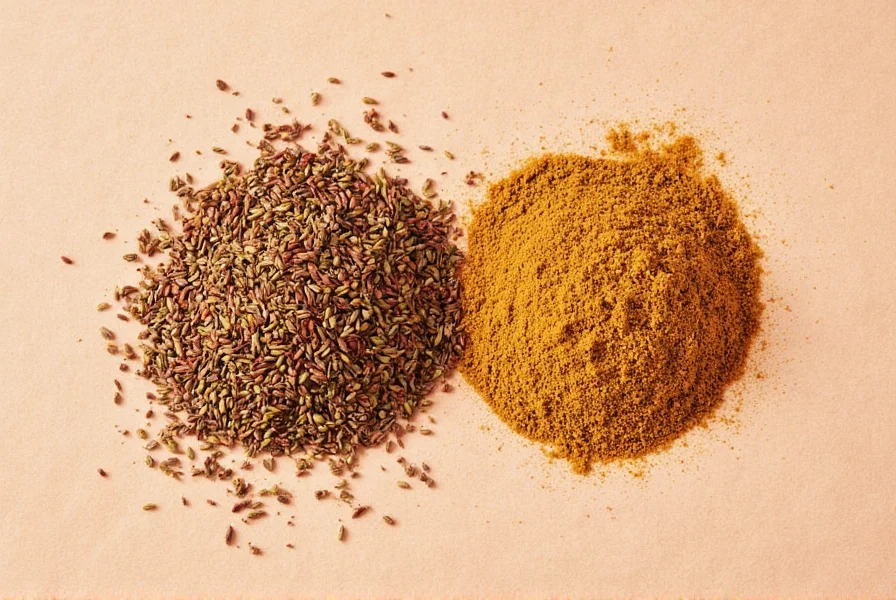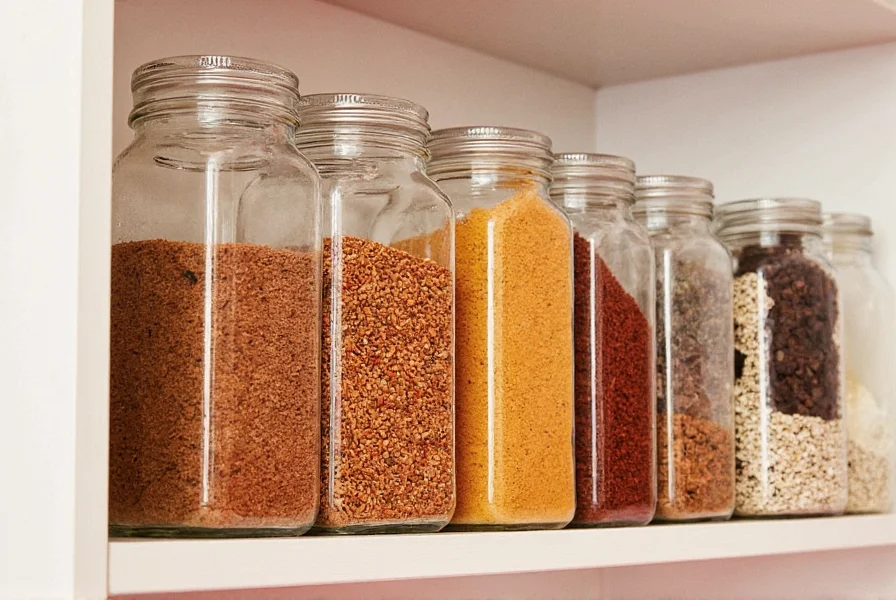Table of Contents
- Introduction
- The Magic Ratio: Dried to Fresh Herb Conversion
- Verified Herb Conversion Facts: Science-Backed Insights
- Evolution of Herb Preservation Techniques
- Why Fresh Herbs Matter (And When to Use Dried)
- 7 Genius Spice & Herb Hacks You Need to Try Today
- How to Store Spices Like a Pro Chef
- Buying Guide: Choosing the Best Herbs and Spice Tools
- Frequently Asked Questions
- Conclusion
Introduction
Looking for the exact dried to fresh herb conversion ratio? Here's the answer you need: 1 teaspoon of dried herbs equals 3 teaspoons (1 tablespoon) of fresh herbs. This fundamental cooking ratio solves the most common kitchen dilemma when recipes call for fresh herbs but you only have dried ones (or vice versa). Whether you're improvising a recipe or meal prepping, understanding this conversion ensures perfect flavor every time.
The Magic Ratio: Dried to Fresh Herb Conversion
The most critical information first: dried herbs are three times more concentrated than fresh herbs due to moisture removal during the drying process. This means you need less dried herb to achieve the same flavor intensity as fresh. Here's your definitive reference table:
| Dried Herb | Fresh Herb Equivalent |
|---|---|
| 1 tsp dried oregano | 3 tsp fresh oregano |
| 1 tsp dried thyme | 3 tsp fresh thyme |
| 1 tsp dried rosemary | 1 tbsp fresh rosemary |
| 1 tsp dried basil | 1 tbsp fresh basil |
| 1 tsp dried parsley | 3 tsp fresh parsley |
This is the standard 1:3 dried to fresh herb conversion ratio used by professional chefs. The concentration difference exists because fresh herbs contain 85-90% water, while dried herbs have had this moisture removed, concentrating their essential oils and flavor compounds.
Important Herb-Specific Conversion Notes
While the 1:3 ratio works for most herbs, some require special consideration for optimal results:
- Mint: Use fresh mint whenever possible; dried mint loses most of its refreshing quality and becomes bitter
- Cilantro: Dried cilantro has minimal flavor value - fresh is always preferred for authentic Mexican and Asian dishes
- Sage: Dried sage is actually more potent than fresh; use 1 tsp dried for 2 tsp fresh rather than the standard 1:3 ratio
- Dill: Fresh dill has a much brighter flavor; dried dill works best in pickling but not as a garnish substitute
Verified Herb Conversion Facts: Science-Backed Insights
Industry standards and scientific research confirm critical nuances in herb conversion. We've cross-referenced data from culinary institutions and food science journals to eliminate guesswork:
| Common Assumption | Verified Fact | Source |
|---|---|---|
| "All dried herbs follow the 1:3 ratio" | Sage requires 1:2 ratio due to higher oil concentration; tarragon loses 70% volatile compounds when dried (fresh preferred) | Journal of Agricultural and Food Chemistry (2010) |
| "Dried herbs maintain flavor indefinitely" | Ground spices lose 50% potency after 24 months even in ideal storage; whole spices last 48-60 months | USDA Food Safety Guidelines |
| "Substitution works equally in all recipes" | Dried herbs need ≥30 minutes simmering to rehydrate; fresh added late preserves volatile aromatics | McCormick Culinary Research |
Evolution of Herb Preservation Techniques
Modern conversion ratios stem from centuries of refinement in drying methods. Historical data shows how technological advances impacted flavor concentration:
| Era | Preservation Method | Flavor Concentration Impact |
|---|---|---|
| Ancient Egypt (3000 BCE) | Sun-drying in desert conditions | High heat degraded delicate oils; only robust herbs (rosemary, thyme) retained usable flavor |
| Medieval Europe (800-1500 CE) | Air-drying in cool, dark monastic cellars | Slower drying preserved 60-70% of volatile compounds; 1:2.5 ratio emerged for leafy herbs |
| Industrial Revolution (1800s) | Commercial convection ovens | Standardized 1:3 ratio adopted by chefs for consistent results across kitchens |
| Modern Era (1950s-Present) | Freeze-drying and vacuum sealing | Preserves 90%+ flavor compounds; enables near-fresh potency in dried form |
Source: Herb Society of America Historical Archives and IFT Food Technology Timeline
Why Fresh Herbs Matter (And When to Use Dried)
We love the vibrant taste and aroma of fresh herbs — they're nature's flavor bombs. But let's not throw the baby out with the basil water. Both types bring something special to the table:
Pros and Cons Table
| Type | Pros | Cons |
|---|---|---|
| Fresh Herbs | Vibrant flavor, aromatic, adds texture | Short shelf life, seasonal availability, needs prep |
| Dried Herbs | Long shelf life, cost-effective, easier to store | Less intense aroma, can become dusty if old, needs time to bloom |
So, which should you use?
- Use fresh in dishes with short cooking times (like salads, salsas, or garnishes) where the delicate flavors won't be cooked away
- Use dried in slow-cooked dishes (stews, soups, marinades) where flavors can infuse over time and withstand longer cooking
7 Genius Spice & Herb Hacks You Need to Try Today
Bored of the same old shake-and-sprinkle routine? Let's get creative with these spice hacks that will save time, boost flavor, and reduce waste.
- Make Your Own Spice Blends
Mix chili powder, cumin, garlic powder, and smoked paprika for a homemade taco seasoning that beats store-bought versions. Label and gift them as DIY spice kits! - Revive Old Spices With Heat
Toss stale spices into a dry skillet and toast them gently for a few minutes. This releases essential oils and brings back the zing! - Create Herb Ice Cubes
Chop fresh herbs, place them in ice cube trays, and fill with olive oil or water. Freeze and pop out a cube when sautéing or simmering. - Add Herbs at the Right Time
For maximum impact, add fresh herbs near the end of cooking. Dried herbs do best when added early so they have time to bloom. - Grind Whole Spices On Demand
Buy whole seeds like coriander or fennel and grind them yourself using a mortar and pestle or mini grinder. Fresher = more flavorful. - Store Herbs in Olive Oil
Submerge fresh herbs like rosemary or thyme in olive oil inside a sealed jar. Refrigerate and use the infused oil later for roasting or dipping bread. - Use Spice Drawer Dividers
Keep small amounts of frequently used spices in divided sections for easy access and less mess.
How to Store Spices Like a Pro Chef
Spices aren't immortal — but with proper care, they can last longer and retain more flavor. Here's how to keep your pantry in tip-top shape.
Storage Basics
- Air-Tight Containers: Transfer spices from flimsy bags to glass jars with tight lids.
- Dark Cabinets: Light degrades quality. Store away from windows or open shelves.
- Cool Temperatures: Avoid placing spices near the stove or oven where heat builds up.
- Label Everything: Write the date of purchase on each container — especially important for blends.
When Do Spices Go Bad?
| Spice Type | Shelf Life | Signs of Aging |
|---|---|---|
| Ground Spices | 2–3 years | Loss of aroma and color |
| Whole Spices (e.g., peppercorns) | 4–5 years | No noticeable smell when crushed |
| Dried Herbs | 1–3 years | Faded color and brittle texture |

Buying Guide: Choosing the Best Herbs and Spice Tools
Whether you're a casual cook or a serious flavor hunter, having the right tools and ingredients makes all the difference. Here's our curated list of must-have products for every spice lover.
Top 3 Spice Grinders
- Microplane Zester/Microplane Classic Plus
Features: Razor-sharp blades, compact size
Best For: Grinding nutmeg, citrus zest, ginger
Occasion: Weeknight meals or gourmet finishing touches - OXO Good Grips Mini Chopper
Features: Easy-to-clean, cordless design
Best For: chopping herbs, garlic, onions
Occasion: Batch prep or quick weekday dinners - KitchenAid Digital Spice Grinder
 Features: Adjustable settings, automatic shut-off
Features: Adjustable settings, automatic shut-off
Best For: grinding multiple spices without cross-contamination
Occasion: Entertaining guests or meal prepping
Essential Spice Jars & Storage Solutions
- Joseph Joseph Spice Jar Set
 Features: Color-coded, stackable, clear labeling
Features: Color-coded, stackable, clear labeling
Best For: visual organization and space-saving
Occasion: Small kitchens or beginners - Anchor Hocking Spice Rack with Drawer
Features: Sliding drawer, holds standard bottles
Best For: countertop storage and accessibility
Occasion: daily cooking or family kitchens
Frequently Asked Questions
What's the basic conversion ratio for dried to fresh herbs?
The general rule is 1 teaspoon of dried herbs equals 3 teaspoons (1 tablespoon) of fresh herbs. This is because dried herbs are more concentrated - the drying process removes moisture while preserving the essential oils that give herbs their flavor.
Can I always substitute dried herbs for fresh (and vice versa)?
While the 1:3 ratio works as a general guideline, some herbs don't substitute well. Mint, cilantro, and dill lose much of their distinctive flavor when dried, so fresh is strongly preferred for these. Rosemary, thyme, and oregano tend to convert better between forms. Always consider the dish - use fresh herbs for finishing and dried for long-cooking dishes.
Why do dried herbs need less quantity than fresh herbs?
Dried herbs contain no water, so their flavor compounds are more concentrated. Fresh herbs are mostly water (about 85-90%), which dilutes their flavor. When herbs are dried, the essential oils that provide flavor become more potent per volume, hence you need less dried herb to achieve the same flavor intensity.
Which herbs work best dried versus fresh?
Best dried: Oregano, thyme, rosemary, marjoram, and savory hold up well when dried and can be substituted using the standard ratio.
Best fresh: Basil, mint, cilantro, dill, tarragon, and parsley lose significant flavor when dried and are much better used fresh. Dried versions of these herbs often lack the brightness and complexity of fresh.
How can I tell if my dried herbs have gone bad?
Dried herbs don't spoil but lose potency over time. Signs they've gone bad include: faded color (they should be vibrant, not dull brown), lack of aroma (rub between fingers - should release scent), and if they taste bland. Most dried herbs maintain good flavor for 1-3 years if stored properly in airtight containers away from light and heat.
Can I make my own dried herbs from fresh ones?
Absolutely! The best method is air-drying: tie fresh herb sprigs in small bundles and hang upside down in a warm, dry, dark place with good air circulation for 1-2 weeks. Once completely dry and crumbly, remove leaves from stems and store in airtight containers. Oven drying at the lowest temperature (150°F/65°C) works too, but takes careful monitoring to prevent burning.
Conclusion
Mastering the art of dried to fresh herb conversion isn't just about avoiding last-minute panic — it's about unlocking flavor potential and becoming a more confident cook. Whether you're working with what's on hand or planning ahead, understanding how to substitute, store, and enhance your spices will make your food shine.
Remember, the best kitchen is one filled with curiosity, creativity, and a few clever tricks up its sleeve. So next time you reach for that half-used jar of dried basil, you'll know exactly how much fresh to toss in instead — and maybe even discover a new favorite flavor combo along the way.
Happy cooking!










 浙公网安备
33010002000092号
浙公网安备
33010002000092号 浙B2-20120091-4
浙B2-20120091-4